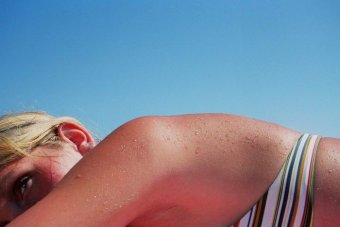What the UV rating really means for your skin
Posted
A national scientific agency says Queensland's UV index so far this summer is higher than in previous years.
Extreme UV ratings of 16 and 17 are predicted until at least Saturday as the state braces for extreme heatwave conditions.
Dr Rick Tinker from the Australian Radiation Protection and Nuclear Safety Agency (ARPANSA) said the December 2016 daily maximum UV index average for Brisbane was 12.4, compared to 10.8 in December 2015.
He said the agency's highest ever recorded average figure was 12.5 in 2009.
"The average for Queensland and Brisbane does range from 12 to 14, however from a protective perspective we really require protective action for anything above a UV of three," he said.
"Based on some of the historical data that ARPANSA has collected over the last 20 years, the levels do seem to be higher this year and last year."
ARPANSA has its Queensland monitoring stations in Brisbane and Townsville and collates data from an 'actual' ground UV index, compared with the Bureau of Meteorology's 'predictive' model, which is based on clear sky conditions.
Dr Tinker said, for this reason, ARPANSA's measurement would always be equal to, or less than, the forecast number.
UV damage beyond the surface
 Photo:
Professor Michael Kimlin assesses the image of ABC presenter Annie Gaffney. (ABC Sunshine Coast: Kylie Bartholomew)
Photo:
Professor Michael Kimlin assesses the image of ABC presenter Annie Gaffney. (ABC Sunshine Coast: Kylie Bartholomew)
The UV Index is a scale used to describe the intensity of ultraviolet radiation that penetrates the atmosphere and reaches the earth's surface.
Developed in Canada in the early 1980s, the levels range from 1 or low exposure to 11+, which is considered extreme.
A leading Queensland skin cancer researcher said unprotected skin exposed to extreme UV conditions would burn within minutes.
Professor Michael Kimlin from the University of the Sunshine Coast and the Cancer Council Queensland said the Queensland data was unique.
"They thought there's not too many places in the world that get much higher than 12 but unfortunately for us here in Queensland we max out at that very quickly, most times of the year," he said.
Professor Kimlin said the danger with ultraviolet radiation was that it was not felt on the skin by heat or discomfort at the time.
It was only evident afterwards in the form of sunburn, but he said a growing area of research was focusing on cases where unprotected skin was exposed to the sun without obvious sunburn.
"What happens when people go out in the sun, get sun exposure but don't get sunburnt, what does that mean for their skin cancer risk?" he said.
"What we do know is that every little bit of UV exposure counts."
No sunburn? Don't be fooled
Professor Kimlin said that although the sunburn may not be evident that day or the following day, there was activity going on beneath the skin's surface.
"Underneath the skin the UV is interacting with our DNA causing changes, causing damage, that our body is rapidly trying to repair," he said.
"If we actually get a lot of what we call sub-sunburn exposures, we do believe that it actually increases your risk quite substantially of increasing melanoma."
The Cancer Council Queensland's spokeswoman Katie Clift said more than 3,600 Queenslanders were diagnosed with melanoma each year, while more than 350,000 non-melanoma skin cancers were treated annually.
About 2,100 men were diagnosed with melanoma annually, compared to 1,500 women.
"The majority of skin cancers are caused by overexposure to UV radiation. Damage can occur in as little as 10 to 15 minutes during peak UV periods," she said.
Interestingly, Professor Kimlin said the comparative location that Queensland is from the equator means it would experience about 10 per cent less UV: "Just because of the tilt of the earth's axis, and also ozone circulation, so ozone does have a little bit to play".
"But our main aspect of why we get high rates of melanoma in Queensland is we've got a lovely climate and enjoy an outdoor lifestyle, we're a predominantly fair-skinned population, which puts us at susceptible risk, and the high UV levels," he said.
"In the next couple of days, combined with the fact that it's so hot and people would like to go to the beach to cool down, it's really important that we make sure we protect our skin."
Topics: weather, health, diseases-and-disorders, skin, skin-cancer, maroochydore-4558, brisbane-4000, townsville-4810









